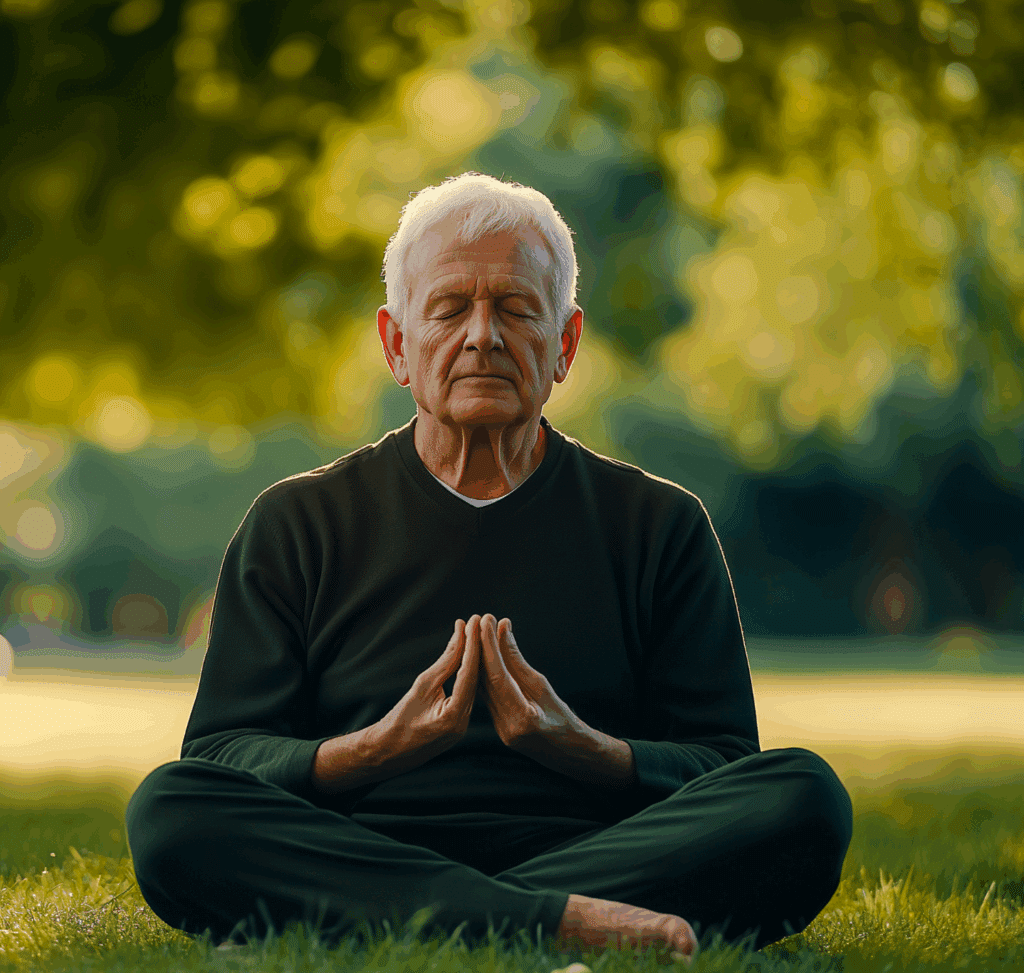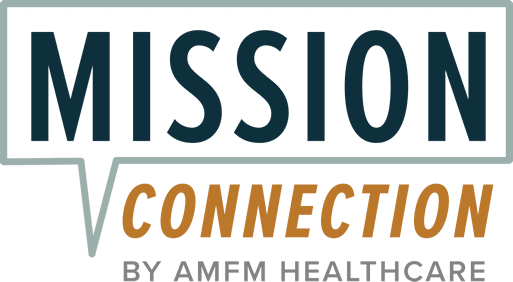Mind-Body Therapies in Psychosomatic Disorder Treatment

Treatment for psychosomatic disorders often varies a great deal, with many people engaging in a combination of psychotherapy, medication, self-care, and mind-body therapies.
Mind-body therapies are a popular form of psychosomatic disorder support because they bridge the gap between mental and physical health. They’ve been found to effectively treat pain, stress, and gastrointestinal complaints, among many other symptoms. Plus, they can improve immune reactivity, emotional regulation, and sleep.3
As there are many types of mind-body therapies, it can be difficult to know which one to pick. A mental health professional can help you make the right choice for you based on your unique needs and circumstances. This guide can also clarify your options and explain what you can expect from mind-body therapies by exploring:
- An overview of psychosomatic treatment
- The value of mind-body therapies in psychosomatic treatment
- Different types of mind-body therapies
- How to choose the right mind-body therapy for you
- Where to find professional psychosomatic disorder treatment

How Are Psychosomatic Disorders Treated?
Some people with psychosomatic disorders are treated with medication. Drugs like antipsychotics, antidepressants, and even herbal remedies have been found to be effective.1
However, while many medications can often successfully treat specific physical symptoms in isolation, psychosomatic disorder treatment should be holistic.2 This is because medications alone can’t address the underlying emotional factors that are intrinsic to psychosomatic ailments.3
Since psychosomatic symptoms stem from psychological stress, treatments must address this root cause. The main way this tends to be addressed is through psychotherapy, as many people with psychosomatic disorders tend to have unmanaged stress or unresolved trauma.4
Yet psychotherapy may not totally address psychosomatic disorders either. Mind-body therapies take psychotherapy a step further, building on key techniques and combining them with physical interventions. This approach recognizes the connection between emotional and physical health and can treat it in a wide range of ways.3
Next, we take a closer look at the value of mind-body therapies for treating psychosomatic symptoms.
Value of Mind-Body Therapies
Psychosomatic therapies, also known as mind-body therapies, recognize that our minds and physical bodies are interconnected. They understand that things like stress, personality traits, trauma, and coping mechanisms can influence the progression and development of certain illnesses. In this way, these therapies can be a direct answer to the many concerns and questions psychosomatics often raise.3
For instance, by addressing stress, tension, and anxiety, mind-body therapies can target things like chronic pain and gastrointestinal disorders.3 They’ve also been found to successfully reduce inflammation, which is a common factor in many physical ailments.5
Some mind-body therapies are associated with improving emotional regulation, attention control, self-awareness, and immune reactivity. And finally, some can modulate the production of endocannabinoids, which are key in regulating mood, sleep, and pain.6
Mind-body therapies tend to be accessible and affordable. Plus, many techniques can be repeated at home once learnt. So, people don’t necessarily have to go to a class to engage in these kinds of treatments.6 However, the group settings of many of these therapies can also provide a social support system, which can be a significant contributor to well-being.
Overall, mind-body therapies for psychosomatic illnesses can work holistically to treat someone’s physical, mental, and social health. Next, we’ll dive into the many different types of mind-body therapy.
Somatic Therapy for Psychosomatic Disorders
Somatic therapies suggest that our bodies hold and express experiences, emotions, and trauma. As well as those with psychosomatic symptoms, somatic therapy can also treat people with complicated grief, post-traumatic stress disorder (PTSD), trust and intimacy issues, anxiety, depression, and self-esteem problems. Of course, any of these issues could co-occur with psychosomatic symptoms or be their underlying cause.7
While somatic therapy will explore thoughts, feelings, and memories, it uses the body as the starting point for healing. Therefore, psychosomatic therapy techniques may help people to feel safer in their bodies and increase their body awareness.7
Somatic therapy may actually use some of the other therapies we’ll discuss later in this article, such as hypnosis and progressive muscle relaxation. It may also involve dance, breathwork, and acupressure.7 Some key techniques include:
- Body awareness: Cultivating awareness of spots of tension and conjuring calmness
- Pendulation: Guiding people from a relaxed state of mind to a state similar to their traumatic experiences and then back to a relaxed state
- Resourcing: Helping people recall resources that allow them to feel calm and safe in their body, such as certain places or people
- Titration: Guiding people through their traumatic memories, while noticing and addressing moments of physical sensation7
Since somatic therapy is still relatively new, there isn’t a lot of research supporting its effectiveness or many available practitioners. Therefore, it’s important to make sure you always choose a licensed therapist before engaging in forms of psychotherapy that explore trauma.
Other Forms of Mind-Body Therapy for Psychosomatic Disorders
While somatic therapy may be an effective approach for coping with psychosomatic symptoms, there are a range of other evidence-based approaches that could help someone find relief. These include the following options.
Yoga
Yoga is an ancient practice that unites the mind, body, and spirit through breath and movement. The modern wellness movement may use it simply for improving physical strength and flexibility, but it can also improve focus, calm the nervous system, and reduce stress. There are many different types of yoga, which makes it extremely versatile for beginners and people with different health conditions.8
For instance:
- Vinyasa yoga: The most popular type, ideal for building strength and endurance
- Lyengar yoga: Focuses on body alignment and postures, but it lacks the spiritual component
- Kundalini yoga: This has a big focus on spiritual and psychological growth, using chanting and meditation to unlock the body’s potential
- Yin yoga: The “softest” style, prioritizing deep relaxation, flexibility, and reducing mental “tightness”8
Yoga for psychosomatic disorders may be ideal, but preferably alongside other treatments. For instance, research finds that it is effective at treating people with generalized anxiety disorder (GAD), but cognitive-behavioral therapy (CBT) was more effective as a first-line treatment.9
Meditation and Mindfulness-Based Interventions
Meditation is another ancient practice with many modern forms. It usually involves breathwork, asking people to simply pay attention to their breath or control it in guided rhythms. This technique is proposed to activate the parasympathetic nervous system, bringing people out of a fight or flight state.
Other meditations may involve body awareness, body scans, visualization, or engaging in thoughts of love and kindness.
There is also mindfulness therapy. One form of this is mindfulness-based stress reduction (MBSR), which is a structured program proven to increase people’s ability to cope with stress and reduce certain physical symptoms.10
When compared to escitalopram (an anti-anxiety medication) for people with anxiety disorders, mindfulness-based stress reduction was found to be comparably effective, making it an evidence-based treatment for stress and anxiety.11
Tai Chi
Tai chi is a traditional Chinese martial art that involves slow, flowing movement, focused attention, and deep breathing. It’s a gentle type of exercise, ideal for people looking for something low-impact. Like yoga, it incorporates meditation into movement, connecting the mind and body.12
Alongside its physical benefits, tai chi could be a great tool for stress management and mental health. Further, there is some research to support that regular tai chi can improve people’s sense of pain, tension, and mental well-being.12
Progressive Muscle Relaxation
Relaxation techniques for mental health can be incredibly effective, with progressive muscle relaxation (PMR) standing as a tried and true way to calm anxiety. This method invites people to gradually tense and relax individual muscles. For example, it might begin with the toes, feet, and calves, and move up the body from there.13
While this technique is often used by therapists (including somatic therapists), it can be easily done at home. You can find many audio guides online, or simply guide yourself in silence.13
There is a large amount of evidence that shows PMR is effective at reducing stress, anxiety, and depression. Plus, it’s shown to be even more effective when combined with other interventions like psychoeducation, music therapy, deep breathing, counseling services, and listening to nature sounds.14
Hypnosis
Biofeedback
Biofeedback is a technique that guides people to control aspects of their physiology, such as their heart and breathing rate, or muscle tension. It involves monitoring such factors with electronic sensors and displaying this information with visuals or sounds (such as beeps for someone’s heartbeat).16
Then, therapists will guide the person through relaxation techniques and mindfulness to control their breathing and tension. By having this palpably demonstrated in front of them, someone can gain a greater sense of control over the function of their bodies.16
Further, biofeedback can be a helpful treatment for those with anxiety, stress, trauma, insomnia, IBS, and some pain conditions.16
Choosing the Right Mind-Body Therapy For You
There’s no single best mind-body therapy for every person with psychosomatic disorders; the best fit will depend on their specific symptoms, personality, and preference. Considering the following questions may help you decide between therapies:
- Do you want to engage in a structured therapy program or class, or would you like to have a technique you can use anytime at home?
- Would you prefer to engage in rigorous movement or something that’s lower impact?
- Is the type of therapy proven to help with your specific symptoms?
- If you want an in-person option, what’s local to you and affordable?
Some people may choose to use a mind-body therapy alongside other treatments and coping strategies for psychosomatic disorders. If so, they may need to consider whether certain mind-body therapies are complementary. For instance, if you’re already seeing a psychotherapist, attending hypnosis sessions, or a somatic therapist may be too conflicting.
Remember, the majority of therapies for psychosomatic disorders work best when they’re used consistently. Pick one that you’ll easily be able to incorporate into your daily routine.
Mission Connection: Get Support for Psychosomatic Disorders Today
For the most part, psychosomatic care plans should be holistic, helping people to understand and heal their symptoms and reconnect their minds to their bodies. At Mission Connection, we offer a range of in-person, online, and group therapies to help our clients in the most personalized way.
Our licensed therapists can treat trauma, heal with mindfulness, and use a range of other therapeutic techniques. Get in touch today to learn about our services and take the next step towards healing your psychosomatic symptoms.

References
- Somashekar, B., Jainer, A., & Wuntakal, B. (2013). Psychopharmacotherapy of somatic symptoms disorders. International Review of Psychiatry, 25(1), 107–115. https://doi.org/10.3109/09540261.2012.729758
- Singh, A. N. (2006). Psychosomatic medicine and psychopharmacology, symbiosis of present and future. International Congress Series, 1287, 12–16. https://doi.org/10.1016/j.ics.2005.10.004
- Hartman, J. (2023). Exploring the connection between mind and body: Understanding psychosomatics. Journal of Neuropsychiatry, 13(2), Article 658. https://doi.org/10.37532/1758-2008.2023.13(2).658
- American Psychological Association. (n.d.). Psychosomatic disorder. In ScienceDirect Topics. https://www.sciencedirect.com/topics/psychology/psychosomatic-disorder
- Bower, J. E., & Irwin, M. R. (2016). Mind–body therapies and control of inflammatory biology: A descriptive review. Brain, Behavior, and Immunity, 51, 1–11. https://doi.org/10.1016/j.bbi.2015.06.012
- Grasser, L. R., & Marusak, H. (2023). Strong mind, strong body: The promise of mind–body interventions to address growing mental health needs among youth. Mental Health Science, 1(2). https://doi.org/10.1002/mhs2.16
- Salamon, M. (2023, July 7). What is somatic therapy? Harvard Health. https://www.health.harvard.edu/blog/what-is-somatic-therapy-202307072951
- Psychology Today. (2025). Yoga: For Each One, The Right Style. https://www.psychologytoday.com/us/articles/200705/yoga-for-each-one-the-right-style
- Simon, N. M., Hofmann, S. G., Rosenfield, D., Hoeppner, S. S., Hoge, E. A., Bui, E., & Khalsa, S. B. S. (2020). Efficacy of yoga vs cognitive behavioral therapy vs stress education for the treatment of generalized anxiety disorder. JAMA Psychiatry, 78(1), 13–20. https://doi.org/10.1001/jamapsychiatry.2020.2496
- Grossman, P., Niemann, L., Schmidt, S., & Walach, H. (2004). Mindfulness-based stress reduction and health benefits. Journal of Psychosomatic Research, 57(1), 35–43. https://doi.org/10.1016/S0022-3999(03)00573-7
- Hoge, E. A., Bui, E., Mete, M., Dutton, M. A., Baker, A. W., & Simon, N. M. (2022). Mindfulness-Based stress reduction vs escitalopram for the treatment of adults with anxiety disorders: A randomized clinical trial. JAMA Psychiatry, 80(1), 13–21. https://doi.org/10.1001/jamapsychiatry.2022.3679
- Psychology Today. (2025). Tai Chi For Chronic Musculoskeletal Pain .https://www.psychologytoday.com/us/blog/overcoming-pain/200906/tai-chi-for-chronic-musculoskeletal-pain
- Psychology Today. (n.d.). Progressive Muscle Relaxation https://www.psychologytoday.com/us/blog/vitamin-you/201010/progressive-muscle-relaxation
- Khir, S. M., Yunus, W. M. A. W. M., Mahmud, N., Wang, R., Panatik, S. A., Sukor, M. S. M., & Nordin, N. A. (2024). Efficacy of Progressive Muscle Relaxation in Adults for Stress, Anxiety, and Depression: A Systematic Review. Psychology Research and Behavior Management, 17(1), 345–365. https://doi.org/10.2147/PRBM.S437277
- Psychology Today. (2025). The Power of Hypnosis. https://www.psychologytoday.com/us/articles/200101/the-power-of-hypnosis
- Psychology Today United Kingdom. (n.d.). Biofeedback https://www.psychologytoday.com/gb/therapy-types/biofeedback
